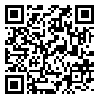1. Abdi, A., Lotfi, M. (2014), Language reflection of Azerbaijan toponyms in ancient sources, Journal of National Research Institute, Vol. 15, No. 58, pp. 49-74. (in Persian)
2. Abdizadeh, E. (2013), Interview.(in Persian)
3. Abdoli, A. (1984), Dictionary of Tati and Taleshi, Bandar-e-Anzali, Dehkhoda Pub. (in Persian)
4. Abdoli, A. (2001), Comparative Dictionary of Taleshi-Tati-Azari, Tehran, Sherkat Sahami Enteshar Pub. (in Persian)
5. Ahadian, M., Bakhtiyari, R. (2009), Introduction to the Toponyms Studies of Iran, Literary Studies, No. 165, pp. 181-199. (in Persian)
6. Ardebiliardebili, D. (2012), Mahname khandani, No.75, pp.37-38
7. Astarabadi, M. (2005), Turkish to Persian Dictionary in the 12th century AH, Tehran: Markaz Pub. (in Persian)
8. Bahranian, H. (2009), Dictionary of ancient geography, Tehran: Entrepreneurial cooperative company culture and art Pub. (in Persian)
9. Bastani rad, H., Mardukhi, D. (2013), Typology of toponyms in historical geography of Iran, Journal of Iran and Islam Historical Research, University of Sistan and Baluchestan, Vol. 7, No. 12, pp. 21-50. (in Persian)
10. Bateni, M. (1992), On language and linguistics, Researches, Maaser Dictionary. (in Persian)
11. Bazin, M., Bromberger, Ch., Asgari khanghah, A., karimi, A. (1987), Gilan and East Azarbayjan,)Simin Tvalaeie, Mohammad Solymani, Translators), Tehran, Toos Pub. (in Persian)
12. Behforuz, F. (2009), Most fields in Human Geography, Tehran, University of Tehran Pub. (in Persian)
13. Diakonoff, Igor Mikhailovich, (2004), The History of Medes, (Karim Keshavarz, Translator), Tehran, Elmi-Farhangi Pub. (in Persian)
14. Dibavar, M. (2013), An introduction to the terminology ancient settlements of Azerbaijan, Journal of Readable Monthly, No. 77, 34-36, Retrieved from www.iranboom.ir.
15. Enayatollah, R. (2001), Arran from ancient times to the beginning of the Mongolian era, Tehran, Documentation Center and History of Diplomacy Pub. (in Persian)
16. Godarzi, H. (2005), Discourses on Language and Identity, Tehran, National Research Institute. (in Persian)
17. Habibisadat, R. (2008), Mental images and Sense of Place, Journal of Fine Arts, University of Tehran, No50, pp. 35, 39. (in Persian)
18. Haggett, P. (1996), Geography, A modern synthesis, (Shapur Godarzinejad, Translator), Teharn, Samt Pub. (in Persian)
19. Jafari, A. (1989), Mountains and Mountain story of Iran, Tehran, Gitashenasi Pub. (in Persian). 20. Jones,
20. Jones, M., Jones, R., Woods, M. (2007), An Introduction to Political Geography, (Zahra Pisgahifard, Rasul Akbari, Translators), Tehran, University of Tehran Pub. (in Persian)
21. Jordan, Terry G., Rowntree, Lester, (2001), A Thematic Introduction to Cultural Geography, )Simin Tvalaeie, Mohammad Solymani, Translators), Tehran, Institute of Culture, Art and Communication Pub. (in Persian)
22. Karang, A. (1954), Tati and Harzani (Two accent of ancient language of Azerbaijan), Tabriz, Ismael Vaezpur Pub.
23. Haghighat, A. (1997), Historical and Geographical Dictionary of Iran Cities, Tehran, Kumesh Pub. (in Persian)
24. Karimi, A. (2013), Story of Tat, Sureh Institute of Higher Education Pub. (in Persian)
25. Kashghari, M. (2005), Hossein Mohammadzadeh sedigh, Translator, Tabriz, Akhtar Pub. (in Persian)
26. Kasravi, A. (1956), The Names of cities and villages in Iran, Tehran, Shargh Press Institute Pub. (in Persian)
27. Kasravi, A. (2011), Kafnameh, By Hossein Yazdanian, Retrieved from www.iranboom.ir
28. Khalkhal county web site http:// khalkhalim.com
29. Khodaei, Z., Purkheyri, A. (2010), The effect of local identity in citizens' identity, Journal of Bulletin, No. 59, pp. 187- 209. (in Persian)
30. Kohan Shal Village web site http://shalejan.blogfa.com
31. Lotfi, M. (2006), The function of political, social and religious of Sheykh safi-e-din Ardabili Monument in Safavid era, Master Thesis in History, Tehran, University of Alzahra. (in Persian)
32. Magazine of Futures, (1979), Vol. 5, No. 4-6. (in Persian)
33. Mansuri, F. (2008), Studies in history, language and culture of Azerbaijan, Tehran, Haraz Pub.
34. Mirzaei, Sh., Teymori, S., Nejadsatari, S. (2012), Sense of place and identity creation, Journal of National Research Institute, Vol. 13, No. 50, pp. 121-141. (in Persian)
35. Moein, M. (2005), Persian Dictionary, Tehran, Amir Kabir Pub. (in Persian)
36. Molaei Hashjin, N. (2006), Geographical landscape (concepts, definitions and categories), Journal of Geographical landscape, Islamic Azad University Rasht Branch, No. 1, pp. 5-18. (in Persian)
37. Mostufi, A. (2011), Greeting to Azarbaijan, Dat Pub. (in Persian)
38. Nakhjavani, M. (1962), By Abdolali Taati, Tehran. (in Persian)
39. National Cartographic Center web site http://www.ncc.org.ir
40. Novin, H. (2011), The History of Azari language in Azarbaijan, Tehran, Tamadon Irani Pub. (in Persian)
41. Purahmad, A. (2010), Territory of Geography philosophy, Tehran, University of Tehran Pub. (in Persian)
42. Refahi Alamdari, F. (2001), Foundations of Toponym and Toponyms of Iran, Tehran, National Cartographic Center Pub. (in Persian)
43. Rezazadeh Malek, R. (1973), Text and Translation and Dictionary of Rohi Anarjani Treatise (Tehrani Azeri dialect), Tehran, Iran Ancient Culture Community Pub. (in Persian)
44. Riahi khoei, M. (2002), Considerations about the ancient language of Azerbaijan, Journal of Political-economic Etelaat, No. 181,182, pp. 26-35. (in Persian)
45. Sabzalipur, J. (2011), Dictionary of Tati, Rasht, Farhang Elia Pub. (in Persian)
46. Shakoei, H. (2010), New ideas in Geography philosophy, Tehran, Gitashenasi Pub. (in Persian)
47. Tvakoli Moghadam, Gh. (1996), Appellation of Iranian cities, Tehran, Mead Pub. (in Persian)








